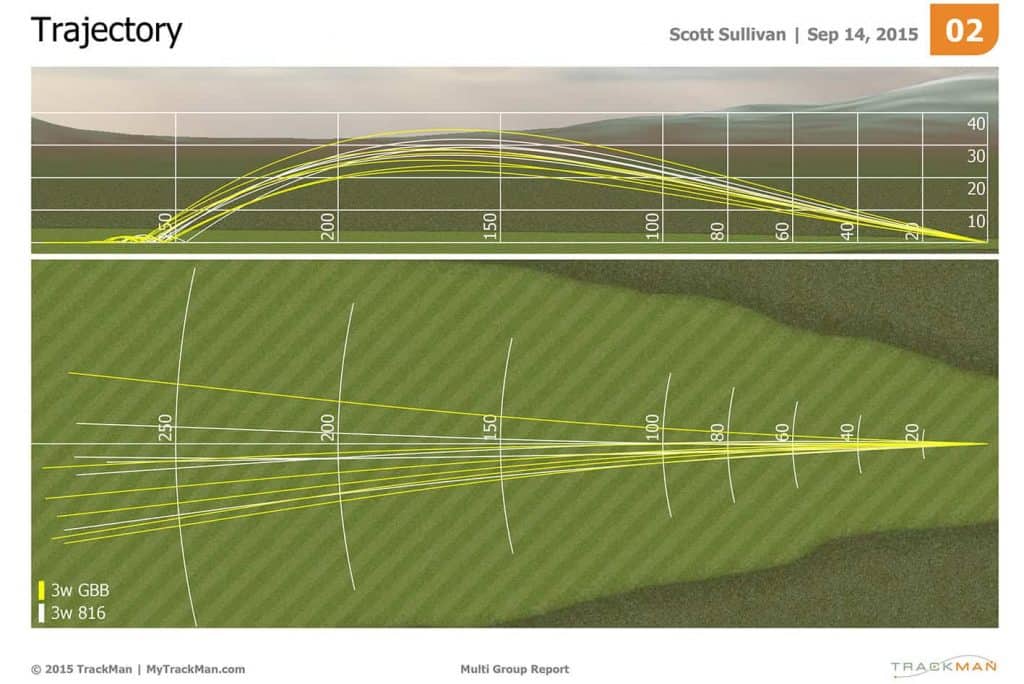There aren’t many lines of golf clubs that inspire as much confidence in a golfer as Callaway’s Big Bertha range. So when Scott Sullivan, General Manager of Progolf International, met up with Jason Ashley, the Custom-fit Specialist for Golf House, to try out Callaway’s new Big Bertha fairway woods one fine morning at The Address Montgomerie Dubai, they knew they were in for a royal treat.
And they didn’t leave The Monty disappointed.
Both the Great Big Bertha and the Big Bertha Alpha 816 fairway metals proved to be astoundingly solid products. The TrackMan data showed incredible consistency in dispersion with one and more distance with the other. The versatility of both clubs makes them an ideal choice for golfers of all levels to really hone in on the different aspects of their long game be it controlling ball flight or gaining more distance.
So whether you’re looking to attack those par fives in two or find the middle of the fairway more often off the tee, Callaway has come up with an emphatic answer.
Here’s what Scott and Jason had to say after trying the clubs and analyzing the data.
Scott Sullivan: We’ve seen great gains in Callaway equipment over the last few years. We’re witnessing unbelievable ball speeds and tighter dispersions so it’s clear that they’re making some really good golf clubs.Last month we tested the new Great Big Bertha and the Big Bertha Alpha drivers. This month we’ve got the new fairway woods that will be launched on the first week of October.

Jason Ashley: When it comes to these two beautiful fairway woods by Callaway, we’re looking at two similar clubs that are designed slightly differently.The Great Bertha has a bigger head than the Alpha, making it a more forgiving golf club. To add to that forgiveness, the head of the Great Big Bertha is also a little bit lighter and has a small weight in the front of the club to help reduce the spin rate. The head is a little bit different when it comes to the Alpha. We’ve got the movable weight technology, which you can switch over between the front and the back of the head, making the Alpha a very versatile club. This will help a lot with spin rate and it’s a luxury you don’t have in the Great Big Bertha. In terms of how they sit it’s apparent that the Great Big Bertha sits very square whereas the Alpha sits slightly more open, meaning the former is ideally designed for somebody who will be looking to draw the ball. One of the biggest things I see in Callaway golf clubs is the amount of ball speed that is generated. The reason behind this ball speed is the Speed Cup Face technology, which produces unbelievable ball speed and that’s another prominent feature in these two woods. The Speed Cup Face technology, which has been absolutely fantastic throughout the range in Callaway, involves a cavity at the back of the club which increases ball speed all across the face translating into more distance.
Scott Sullivan: From hitting them this morning, there are definitely some differences between the Great Big Bertha and the Big Bertha Alpha fairway woods. First of all we all know that the Big Bertha name is iconic and it’s great to see that name back on a golf club. Just by looking at it I want it back in the bag. Looks-wise, when I put them down together the Big Bertha Alpha looks smaller but I prefer the footprint on the Great Big Bertha when I look down at it on address. In terms of the faces – of the two the Great Big Bertha looks a little shut whereas the Alpha felt like it was a bit more open. When it came to flight I think I hit the Great Big Bertha a little bit better however my dispersion was a tad bit off with this club. However when I gave the Alpha a go, I found that my dispersion was certainly tighter and more consistent. When it comes to the feel off the face, both clubs felt great and it felt like the ball was really jumping off the face.
Jason Ashley: Looking at the numbers we can see that Scott swung the Great Big Bertha, the one with the lighter head, a bit faster than the Alpha. Therefore his ball speed was a tad bit quicker with the Great Big Bertha than it was with the Alpha. In terms of spin rate Scott was getting a bit of a draw with the Great Big Bertha and it seemed to reduce his spin rate a little bit more. He was at the 2900-3000 RMP average which is quite low for a three-wood. As Scott felt, his dispersion with the Big Bertha Alpha was really good. I think that comes down to the way the face sits because Scotty does come a little in-to-out and he does draw the golf ball. We certainly saw slightly different flights and shapes with the two different clubs which was very encouraging from custom-fit perspective. For players who are looking to either shape a ball a certain way or potentially not shape it as much, we’ll see them enjoy a good progression into either one of these two clubs. As a custom-fitter, it’s undoubtedly very exciting to see the forgiveness of the Great Big Bertha plus that little draw-bias. For the slightly better player who can draw the ball but is looking to control his ball flight with something that won’t draw too much, the Alpha would probably be more suited to them as it was with Scott.





















